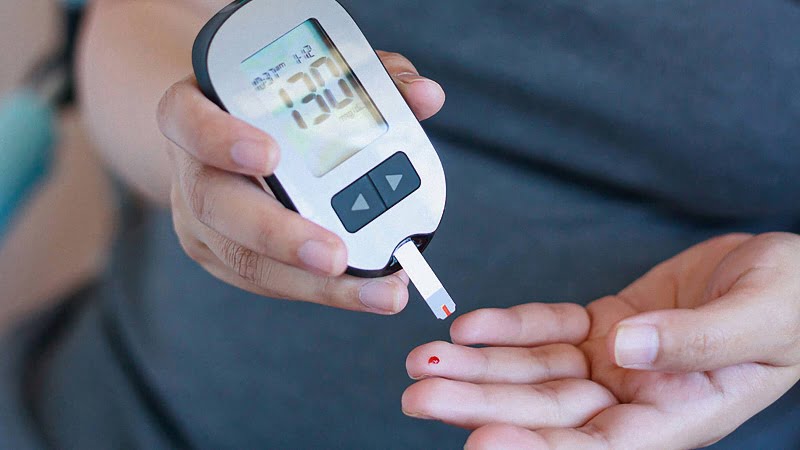1 in 5 men die before the age of 65, 2 in 5 men don’t make it to 75, and on average men die 3.7 years before women, however sometimes it can feel like men’s health is side-lined, either societally or individually. This may be due to the fact that men are far less likely to seek medical advice when an issue arises, often times thinking that symptoms will pass, or that symptoms aren’t worth worrying about in the first place. But why is this? What are the main men’s health issues? And what can we do to address them and to help?
To lead off, a majority of the issues that we’re going to talk about are not gender-unique, however the issues mentioned either disproportionately impact men rather than women, or are a worrying trend in men’s lives that should be addressed. Additionally, when we say that men are less likely to seek medical advice, or actively ignore symptoms of health issues, this isn’t to say that all men think this way, however it is factually accurate to say that men only attend half as many GP appointments as women. Additionally, men are likely to have a lower health literacy than women, meaning they are less likely to know the typical symptoms of the most prevalent health issues concerning them.
Finally, Men are less likely than women to acknowledge illness even when aware of the symptoms, or seek medical help when sick, which has lead to health often being socially constructed as a feminine concern, which then further dissuades men to seek medical advice do to it not being a ‘masculine’ thing to do.
This is, unsurprisingly, an immensely worrying reality. To help start to combat this, there needs to be more of an outward awareness of the health issues that men face.
So what are the health issues that are most prevalent for men?
Through looking at multiple sites focusing on or trying to promote awareness of men’s health, some of (and definitely not all of) the main concerns regarding men’s health seem to be the following:
- Diabetes
- Heart disease
- Mental Health
- Impotence
- Prostate and testicular cancers
This limited list shows that the current main issues in the discussion of men’s health aren’t purely down to life-threatening physical conditions. Health is a broad spectrum, encompassing severe diseases, mental health, and non-lethal physical ailments. The reason why these issues need to be discussed in the same breath as deadlier conditions is twofold. Firstly these issues impact a huge number of men, and secondly issues such as mental health are typically viewed as a ‘lesser’ condition by men, and that seeking help for them can culturally be construed as a sign of weakness, despite these very same conditions having the potential to lead into something life-threatening (for example, loneliness leading to depression, leading to suicide).
With that all being said, let’s talk about them.
Diabetes:
According to research, diabetes is more prevalent among men than women, with 55.8% of those diagnosed with type 2 diabetes being male, and with there being approximately 5 million people living with diabetes, this equates to just under 2.8 million people. The proportionality breakdown of Type 1 diagnoses by gender is roughly the same again, with 56.4% of those diagnosed with type 1 diabetes being male, equating to just over 225,000 men. Combining those two figures, that means that over 9% of the UK male population of 32.9 million suffers from diabetes, and with some experts saying that there could be a further 500,000 men living with undiagnosed diabetes, this then pushes the number up to over 1 in 10 men.

Some of the symptoms of diabetes can include frequent urination, fatigue, blurred vision, inexplicable weight loss, and numbness or tingling in the hands and feet. If untreated it can lead to complications with your skin, liver, eyes, kidneys, nerves, and cause impotence, and further down the line can progress on to macrovascular issues such as heart attacks and strokes, as well as microvascular diseases impacting the heart further.
Studies have been looking at how CBD can be potentially used as a treatment for diabetes, as well as looking at the use of CBD as a therapeutic for any additional health concerns that may come about as a result of diabetes. More specifically, CBD was shown to reduce inflammation and cell death in diabetic hearts and livers, as well as potentially alleviating the symptoms of microvascular diseases. Through this, there is a solid base of rationale in taking CBD alongside maintaining a healthy diet and active lifestyle, as these things may be able to lessen the impact of the symptoms of diabetes. Additionally, topical products such as CBD balms have been shown to have efficacy in alleviating nerve damage that can come as a result of diabetes.
Heart Disease:
Studies from 2020 show that 1 in 10 men aged 50 have a heart age 10 years older than they are, and that of the 7.6 million people living with a heart or circulatory disease in the UK, 4 million are men, equating to 12% of the male population. Additionally heart disease mortality rates are higher in men than women, with 1 in 7 men dying from heart disease compared to 1 in 11 women. There could be a whole range of different reasons as to why this seems to impact men more, however it’s theorised that men typically have jobs that are either considered more stressful, or overwork themselves to the point of undue stress. Additionally, as mentioned towards the start of this article, men tend to ignore the warning signs of health conditions and will downplay the symptoms.

While there are a wide array of different heart diseases, ranging from heart rhythm problems, heart valve disease, and coronary artery disease to name a few, there are some universal symptoms across all conditions. These can include shortness of breath, chest pains, irregular heartbeats, fatigue, and swelling of the feet or ankles.
CBD use in regards to heart disease has been theorised to be of great benefit due to its antioxidant and anti-inflammatory properties, and studies have shown that CBD can protect against vascular damage. In vivo studies have shown that CBD can also protect against ischemia-reperfusion injury, or the paradoxical damage caused by the reestablishment of blood flow to damaged previously damaged ischemic (blood deprived) tissue. Additionally, in animal models of stroke, CBD oils have been shown to reduce infarct size of the left ventricle and increase blood flow, both crucial for reducing mortality rates.
Mental Health:
Mental health in men has for a long time been stigmatised. There’s a perception of masculinity that often times inhibits men’s willingness to disclose mental health issues, that discussing things like depression will make you look ‘weak’, which can lead to these issues continuing to worsen and devolve into more serious outcomes. This could be the reason as to why the statistics are so skewed when looking at mental health diagnoses across genders. In terms of actual diagnoses of mental illnesses, women have statistically higher rates, with 24% of women being diagnosed with depression compared to 13% of men, and being twice as likely to be diagnosed with anxiety than men are. Now, while there are many different forms of mental illness, anxiety disorders and depression are by far and away the biggest two, and make up a bulk of the statistics regarding mental health diagnoses.

The skew in statistics are observable when you see that consistently, year after recorded year, around 75% of recorded suicides were men, with suicide being the single largest cause of death of men under 50. These high rates get even higher when you look at minority communities, including gay men, men from BAME backgrounds, and war veterans. Due to this, mental health is considered a silent killer in the male community, as there is a cultural preconception that dissuades discussing men’s mental health.
In terms of the signs of mental health issues, the spectrum is incredibly broad. There are a few common signs, such as withdrawal and self-imposed isolation from friends and activities, excessive fears or worries, low energy, sleep issues, lack of concentration, and inability to cope with daily problems or stress. These really are just a few of the signs, and there are a plethora of additional symptoms, some branching into physical symptoms such as back pain, stomach pain, headaches, and other inexplicable aches and pains.
While the first option should absolutely be talking to people regarding mental health issues, be it a friend, family member, or professional, many studies have been conducted into CBD’s use in combatting mental health issues. Findings have shown that CBD oil has efficacy in reducing anxiety behaviours relevant to multiple disorders such as Post-Traumatic Stress Disorder, Generalised Anxiety Disorder, Panic Disorder, Obsessive Compulsive Disorder, and Social Anxiety Disorder. The studies so far have said that this is down to CBD’s interaction with the 5-HT1a receptor, which when activated can reduce anxiety, showing the potential of CBD being a promising anxiolytic.
Impotence:
While typically considered an issue that only impacts older men, the rates of impotence for men under 50 throughout the UK have more than doubled over the last 25 years. The further breakdown of this shows that 35.6% of men aged 18 to 25, and 30.7% of those aged 26 to 40 struggle with this condition. In total, this affects 11.7 million men, with 1 in 8 men saying that this is a regular and continuous occurrence, showing that this clearly isn’t just an issue for the older man.

There are multiple different potential causes for impotence, it’s not just a singular root cause. It can be either physical or psychological. In terms of physical causes, this could be due to narrow blood vessels as a result of high blood pressure or cholesterol, side effects from certain forms of medication, or exhaustion. With regards to psychological causes, it can include stress, anxiety, or pressure, with the highest rates of impotence being shown in men who feel pressured to start a family or have more children.
While there aren’t really any symptoms behind erectile dysfunction, it in and of itself can be seen as a symptom of other health conditions. These can include cardiovascular disease, diabetes, and hormonal problems or imbalances. Typically the best options regarding treatments tend to be down to lifestyle changes. Reductions in alcohol consumption, cutting out smoking, reducing stress, and losing weight can all drastically improve impotence. There have also been theories in to how CBD can help as a potential treatment, as CBD has been shown to have vasodilative properties, allowing for increased blood flow. Additionally, as mentioned in the above section, for the psychological side of impotence regarding stress and anxiety, with CBD having anxiolytic properties, it may also be able to help in that regard.
Prostate & Testicular Cancers:
These have historically been two of the core men’s health issues that have been talked about through a majority of men’s health awareness campaigns. One typically impacting the older generations, one typically impacting the younger. Both while having high rates of survival are dependent on early diagnoses, however with the trend of men having lower levels of health literacy than women (with women being more likely to recognise cancer warning signs) it’s crucial to be aware of those signs in order to promote early detection.

Prostate cancer makes up 26% of all cancer diagnoses in men, making it the most common form of cancer outside of skin cancers. This equates to 52,300 new prostate cancer cases every year in the UK. Typically impacting men over 50, it can additionally disproportionately impact black men, and the risk of developing prostate cancer only increases with age. Because of this, regular testing is suggested for anyone over 50, or in the case of black men or having a family history of prostate cancer, regular testing is suggested from the age of 45. In total, 1 in 8 men will be diagnosed with prostate cancer in their lifetime, and while 77% of men diagnosed with prostate cancer survive their disease by 10 years or more, there is a direct correlation (as with any forms of cancer) between early diagnosis and treatment, and survival rates.
Testicular cancer is a much rarer form of cancer, with it accounting for only 1% of all cancers that occur in men, however despite that low rate, it’s simultaneously the most common type of cancer to affect men between the ages of 15 and 49. In many respects, it’s almost the opposite of prostate cancer, with it affect younger men more, and with white men having a higher risk of developing it than men from other ethnic backgrounds. Despite this, 62% of men are either oblivious to the symptoms, or don’t know how to check for symptoms. Due to this, there has always been a push for younger men to be aware of any changes and to not halt from seeking medical advice when necessary, as an early diagnosis can lead to a 98% survival rate of at least 5 years.
The studies into CBD and its potential for being a therapeutic for cancers is very much in its early stages. While we absolutely are not saying that CBD can be considered a cure or should be used as a replacement for any forms of medication or therapy, there are certain properties that CBD has that have lead to it being considered a therapeutic with regards to alleviating the side-effects of treatments. For example, it has shown promise when looking at enhanced wound healing post-surgery, lowered toxicity profiles of chemotherapy treatments, has been perceived to have antiemetic properties to alleviate post-treatment nausea, and can potentially augment the efficacy of standard therapies with regards to chemo-resistant diseases.
So hopefully now you’ve got a better understanding of men’s health…
It’s of vital importance to continue to talk about men’s health. The higher the awareness of what conditions impact men, the easier it is to combat the extensive nature of health illiteracy in men, as well as reducing the cultural stigma behind men talking about issues, and the more likely it is for conditions to be caught early and treated in ample time. Even though we’ve only mentioned a few among here, these are among the primary health concerns that impact men across a range of ages, and yet, these conditions that are contributing to men dying on average 5 years earlier than women, they are largely preventable, or are often times ignored. So keep talking about it. The more voices the better.
References:
- https://www.ncbi.nlm.nih.gov/pmc/articles/PMC8160970/
- https://prostatecanceruk.org/prostate-information/about-prostate-cancer
- https://www.nhs.uk/conditions/testicular-cancer/
- https://uk.movember.com/mens-health/prostate-cancer
- https://uk.movember.com/mens-health/testicular-cancer
- https://www.cancerresearchuk.org/health-professional/cancer-statistics/statistics-by-cancer-type/prostate-cancer
- https://pmfmag.co.uk/news/biggest-health-issues-affecting-men/
- https://www.oxfordonlinepharmacy.co.uk/blog/top-5-male-health-problems
- https://www.menshealthforum.org.uk/news/five-surprising-and-shocking-facts-about-mens-health
- https://www.netdoctor.co.uk/healthy-living/a28341/top-mens-health-issues/
- https://patient.info/mens-health
- https://www.menshealthforum.org.uk/key-data-understanding-health-and-access-services
- https://www.blueribbonfoundation.org.uk/about-us/#info
- https://www.statista.com/statistics/387302/individuals-with-diabetes-by-gender-in-england-and-wales/#statisticContainer
- https://academic.oup.com/jcem/article/101/10/3740/2764924
- https://www.diabetes.org.uk/professionals/position-statements-reports/statistics/diabetes-prevalence-2019
- https://www.mayoclinic.org/diseases-conditions/small-vessel-disease/symptoms-causes/syc-20352117
- https://www.diabetes.org.uk/guide-to-diabetes/complications
- https://www.newvictoria.co.uk/about-us/news/cardiovascular-risk-in-men/
- https://www.mayoclinic.org/diseases-conditions/heart-disease/symptoms-causes/syc-20353118
- https://www.ncbi.nlm.nih.gov/pmc/articles/PMC4604171/
- https://www.labmate-online.com/news/laboratory-products/3/breaking-news/how-does-cbd-reduce-anxiety/55473#:~:text=Activating%20neural%20receptors,making%20CBD%20a%20promising%20anxiolytic.
- https://www.mayoclinic.org/diseases-conditions/mental-illness/symptoms-causes/syc-20374968
- https://www.mentalhealth.org.uk/sites/default/files/fundamental-facts-about-mental-health-2016.pdf
- https://cpdonline.co.uk/knowledge-base/mental-health/mens-mental-health/
- https://www.ons.gov.uk/peoplepopulationandcommunity/healthandsocialcare/causesofdeath/articles/leadingcausesofdeathuk/2001to2018
- https://www.mind.org.uk/media/6771/get-it-off-your-chest_a4_final.pdf
- https://www.samaritans.org/about-samaritans/research-policy/suicide-facts-and-figures/latest-suicide-data/
- https://www.mentalhealth.org.uk/a-to-z/m/men-and-mental-health
- https://www.ncbi.nlm.nih.gov/books/NBK534267/
- https://www.priorygroup.com/blog/40-of-men-wont-talk-to-anyone-about-their-mental-health
- https://www.atomikresearch.co.uk/50-of-male-brits-in-their-30s-suffer-erectile-problems/
- https://www.independent.co.uk/news/health/erectile-dysfunction-impotence-rates-viagra-causes-heart-disease-research-a8985216.html
- https://onlinedoctor.lloydspharmacy.com/uk/erectile-dysfunction/erectile-dysfunction-young-men
- https://www.healthline.com/health/healthy-sex/cbd-and-libido#other-sexual-benefits
- https://www.baus.org.uk/patients/conditions/3/erectile_dysfunction_impotence/




